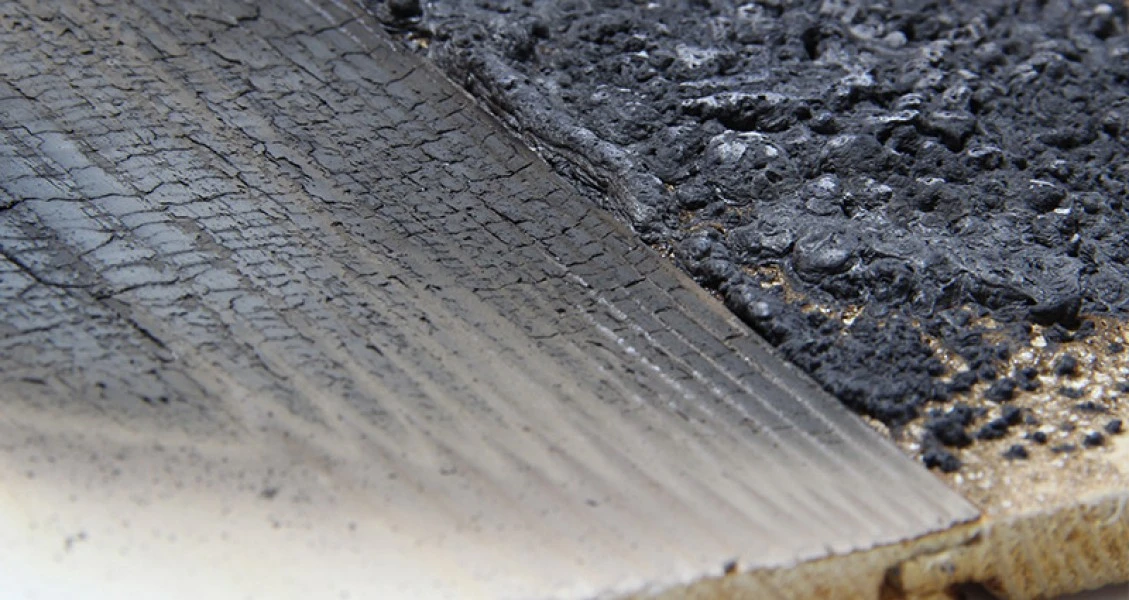An introductory guide to intumescent paints and fire retardant paints.
WHAT IS INTUMESCENT PAINT AND HOW DOES IT WORK?
Intumescent paints are an important element of passive fire protection, as they can be applied to a variety of combustible building materials in order to bring them into compliance with fire regulations.
Intumescent paint reacts when its temperature attains or exceeds 120°C, and the process results in a soft charring effect at its surface (which insulates and reduces transmission of heat into the substrate) and the release of water vapour (which helps to cool the substrate).
WHAT TYPES OF SUBSTRATE CAN BE PROTECTED WITH INTUMESCENT PAINT?
Structural Steel and Cast Iron
In the event of fire, structural steel elements can have their load-bearing capability seriously impaired. The structure may then rapidly collapse, thus impeding evacuation and fire-fighting and endangering personnel.
The duration of protection during a fire often differs between manufacturers and individual products, but it is often between 60 and 120 minutes. During this period, the load-bearing capabilities of steel should not be impaired. Many architects specify this type of fire protection, as it allows the incorporation of steel structures as an architectural design feature.
Timber Substrates
A range of timber substrates can be coated with intumescent paint in order to comply with standards in fire regulations. These building elements include frames, staircases, floors, ceilings, cladding, and doors made of wood or wood derivatives.
The two distinct standards which govern timber substrates are fire resistance and flame retardation.
Fire Resistance (Resistance to Penetration of Fire)
This regulation requires the timber substrate to maintain structural or compartmentation ability for 30 or 60 minutes. Compliance is determined by a fire test, which has to prove the duration through which an intumescent paint on a given timber product can maintain the integrity of the product. The rate of burn of timber substrates (the charring rate) is also taken into consideration. In simple terms, low-density softwoods burn faster than high-density hardwoods, and this means that they need to be much thicker in order to achieve results similar to hardwoods.
You can read more about timber charring rates here:
Flame Retardation (Resistance to Surface Spread of Flame)
This regulation targets the ability to prevent flames from spreading across the surface of a substrate.
There are two different approaches to this classification:
Class 0 & Class 1 – a UK classification, which is being superseded by European classification.
SBI – a European classification which measures the energy released and the smoke production during a fire test.
Plasterboard and Lath-and-Plaster
This coating system upgrades existing plasterboard or lath-and-plaster ceilings and walls to either 30 or 60 minutes fire resistance. This is particularly useful for heritage properties in which there is a requirement to retain features and no alternative method for provision of compartmentation is permitted.
It is also possible to upgrade an existing layer of 9mm or 12½mm plasterboard to 60 minutes of fire protection, which is a very popular and cost-effective solution during loft conversion projects. Intumescent paint removes the need to install another layer of plasterboard.
Concrete
Intumescent paint can also prolong the fire resistance of concrete structures, such as office blocks, car parks, and tunnels.
There appears to be popular belief that concrete provides indefinite fireproofing but this is not true. When exposed to rapid fire (such as that experienced in tunnels or car parks), concrete may lose its fire resistance capability due to spalling. This may lead to a direct exposure of the reinforcements and subsequent failure of the structure.
RECOMMENDED PRODUCTS
Intumescent coating for steel and aluminum protection
Intumescent paint and varnishes for wood
Fire retardant coating for timberFire resistant coating for lath-and-plaster ceilings





